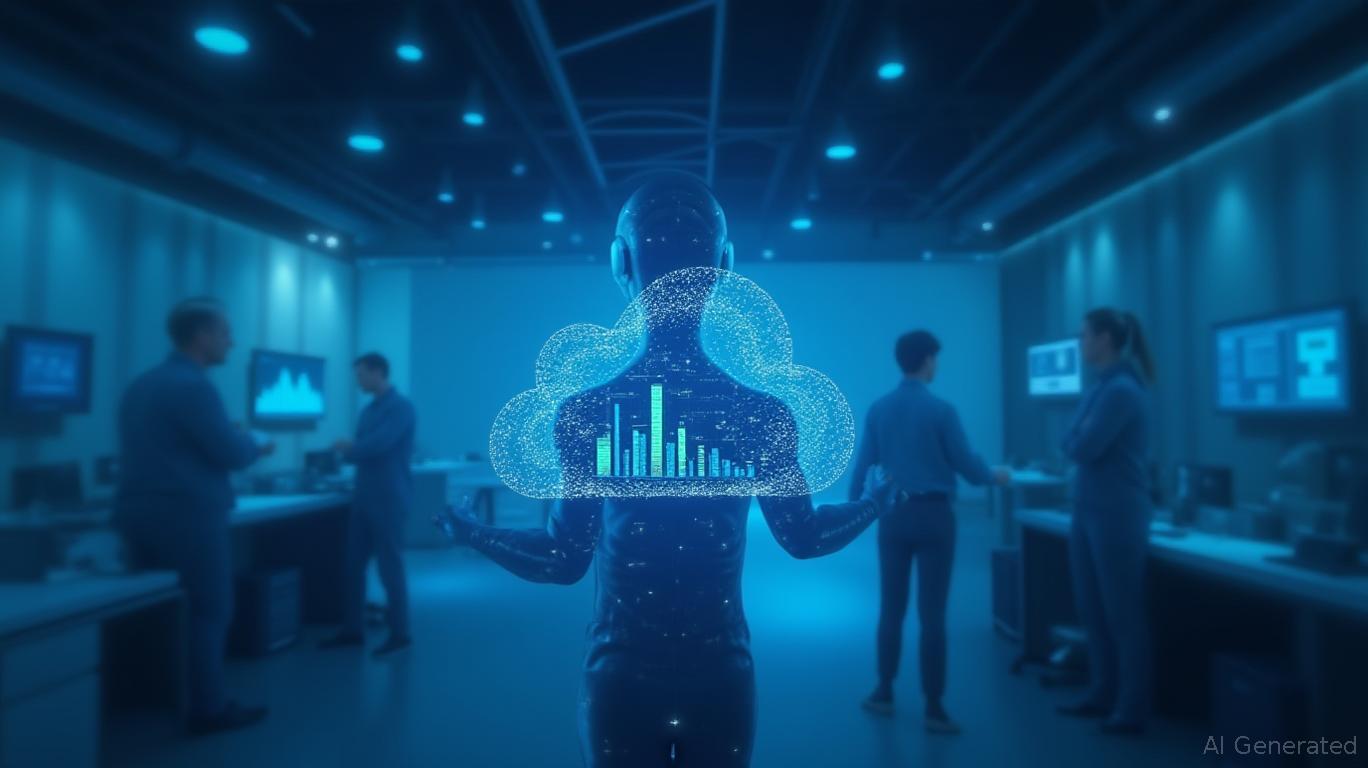SAP's Cloud and AI Pivot: A New Era of Growth Amid Restructuring Challenges
SAP's Q3 2024 results marked a pivotal moment in its evolution from a traditional software vendor to a high-growth cloud and AI leader. With cloud revenue surging 27% year-over-year to €4.35 billion and cloud backlog climbing 29% to €15.4 billion, the company is demonstrating the power of its strategic bets on cloud migration programs and AI innovation. Yet, this transformation is not without turbulence. SAP's aggressive restructuring—impacting up to 10,000 employees—and leadership shifts underscore the costs of its pivot. For investors, the question is clear: Does SAP's structural shift position it for sustained outperformance, or are the growing pains too great? The data suggests the former, with its cloud-centric model and AI-driven value proposition creating a compelling long-term investment case.

The Cloud Flywheel in Overdrive
SAP's Q3 results were fueled by its RISE with
and GROW with SAP programs, which have become the engines of its cloud transition. These initiatives, designed to simplify customer migration to the S/4HANA Cloud platform, added major wins like Clorox, CPKC Railways, and J.M. Voith in Q3 alone. The cloud ERP suite revenue rose 36% at constant currencies, reflecting strong demand for its core offerings. Meanwhile, the current cloud backlog—a measure of contracted but unearned revenue—hit €15.4 billion, up 29% year-over-year, signaling robust future growth.The 2027 deadline for SAP ECC support continues to drive urgency among customers, creating a multi-year tailwind for cloud migration consulting services. This is no small opportunity: SAP's installed base of on-premise ERP users represents a captive audience primed for upgrades. The company's share repurchase program, with €2.6 billion deployed year-to-date toward its €5 billion target, further signals confidence in its long-term trajectory.
AI as the Differentiator: Joule and the Knowledge Graph
While cloud adoption is the foundation, SAP's AI investments—particularly SAP Joule and the Knowledge Graph—are what truly separate it from competitors. In Q3, 30% of cloud deals included AI use cases, with Joule's capabilities—such as collaborative agents and context-aware recommendations—embedded into customer contracts. Over 500 new skills were added to Joule in the quarter, enabling it to tackle 80% of common business processes by year-end.
The Knowledge Graph, launched during SAP TechEd, is a “game-changer” according to analysts, as it allows generative AI to parse structured data and business logic, improving decision-making. This integration into cloud solutions has already driven tangible value: customers like L'OCCITANE Group and Dawn Foods are leveraging these tools to streamline operations and reduce costs.
Yet challenges remain. While SAP's AI strategy has boosted its share price to an all-time high, some investors question whether the tangible ROI of AI features is yet proven. SAP's response? Scaling adoption through broader access. In Q3, Joule was made available to all RISE and GROW customers via “AI units,” ensuring even mid-tier clients can benefit.
Restructuring: Pain Today, Gain Tomorrow
SAP's restructuring—a necessary step to realign its workforce with AI and cloud priorities—has been contentious. The headcount reduction, initially targeting 8,000 employees, expanded to 10,000 by mid-2024, with costs rising to €3 billion. Leadership upheaval, including the departure of CTO Jürgen Müller and CMO Julia White, added to internal instability. Employee engagement dropped to a decade-low 70–74%, raising concerns about morale and retention.
But the financial results speak to resilience. Despite the restructuring, non-IFRS operating profit rose 27%, and free cash flow jumped 44% to €1.25 billion. SAP's focus on cost efficiency—with 2024's transformation program improving margins—suggests that restructuring is working as intended. CEO Christian Klein has signaled a shift toward stability in 2025, prioritizing internal continuity to rebuild trust.
Investment Thesis: A Buying Opportunity in a Transition
SAP's Q3 results and strategic moves argue for a buy rating, with the stock undervalued relative to its growth trajectory. At current valuations—trading at ~15x 2024 non-IFRS EPS—the company offers a rare mix of high-margin cloud revenue (now 51% of total revenue) and secular tailwinds. The 2027 ECC migration deadline, coupled with AI's enterprise adoption, creates a multi-year revenue runway.
However, investors should monitor execution risks: the skills gap for SAP partners, Joule's adoption curve, and employee retention post-restructuring. Still, the strong backlog, share buybacks, and improving AI ROI metrics suggest these hurdles are manageable.
Conclusion: The Cloud-AI Flywheel is Spinning
SAP's Q3 results and strategic moves confirm it is no longer a relic of the on-premise era. Its cloud and AI flywheel—driven by RISE/GROW, Joule, and the Knowledge Graph—is generating momentum that should outlast near-term restructuring pain. For investors seeking exposure to enterprise cloud and AI, SAP's combination of scale, sticky customer contracts, and margin expansion makes it a compelling buy at current levels. While the path to 2025 will have its bumps, the destination is clear: a high-growth tech leader built for the next decade.
Investment recommendation: Accumulate SAP stock on dips below €140, with a 12-month price target of €170.

Comments
No comments yet